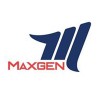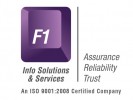
i
Aumni
Techworks
Filter interviews by
Aumni Techworks QA Lead Interview Questions and Answers
6 Interview questions
Risks in a project refer to potential events or situations that could negatively impact the project's success.
Unclear project requirements
Lack of stakeholder involvement
Budget overruns
Technical challenges
Resource constraints
Scope creep
Schedule delays
PDCA stands for Plan-Do-Check-Act, a four-step management method used for continuous improvement.
Plan: Identify the problem and plan a solution
Do: Implement the plan on a small scale
Check: Evaluate the results and compare them to the expected outcomes
Act: Take necessary actions based on the results to improve the process
A function to reverse a given string
Create an empty string to store the reversed string
Iterate through the input string from the end and append each character to the new string
Return the reversed string
PUT is used to update or replace an existing resource, while POST is used to create a new resource.
PUT is idempotent, meaning multiple identical requests will have the same effect as a single request
POST is not idempotent, meaning multiple identical requests may have different effects
PUT is used to update an existing resource at a specific URI
POST is used to create a new resource under a specific URI
A function to count characters in a given string
Use a loop to iterate through each character in the string
Use a dictionary to store the count of each character
Return the dictionary with character counts
Automation framework is a set of guidelines, rules, and best practices for creating and maintaining automated tests.
Automation framework provides structure and organization to automated tests
It helps in reusability of code and reduces maintenance efforts
Common types of automation frameworks include keyword-driven, data-driven, and hybrid frameworks
Aumni Techworks QA Lead Interview Experiences
1 interview found
I applied via Job Portal

(8 Questions)
- Q1. Brief me about your profile
- Ans.
I have extensive experience in QA, leading teams to ensure software quality through testing strategies and process improvements.
Leadership Experience: Led a QA team of 10 testers in a fast-paced environment, improving testing efficiency by 30% through better resource allocation.
Test Automation: Implemented automated testing frameworks using Selenium and JUnit, reducing manual testing time by 50% and increasing test cov...
- Q2. Explain Automation framwork
- Ans.
Automation framework is a set of guidelines, rules, and best practices for creating and maintaining automated tests.
Automation framework provides structure and organization to automated tests
It helps in reusability of code and reduces maintenance efforts
Common types of automation frameworks include keyword-driven, data-driven, and hybrid frameworks
- Q3. WAP to reverse a string
- Ans.
A function to reverse a given string
Create an empty string to store the reversed string
Iterate through the input string from the end and append each character to the new string
Return the reversed string
- Q4. WAP to count characters in string
- Ans.
A function to count characters in a given string
Use a loop to iterate through each character in the string
Use a dictionary to store the count of each character
Return the dictionary with character counts
- Q5. Difference between put and post
- Ans.
PUT is used to update or replace an existing resource, while POST is used to create a new resource.
PUT is idempotent, meaning multiple identical requests will have the same effect as a single request
POST is not idempotent, meaning multiple identical requests may have different effects
PUT is used to update an existing resource at a specific URI
POST is used to create a new resource under a specific URI
- Q6. Explain risks in project
- Ans.
Risks in a project refer to potential events or situations that could negatively impact the project's success.
Unclear project requirements
Lack of stakeholder involvement
Budget overruns
Technical challenges
Resource constraints
Scope creep
Schedule delays
- Q7. Explain the PDCA
- Ans.
PDCA stands for Plan-Do-Check-Act, a four-step management method used for continuous improvement.
Plan: Identify the problem and plan a solution
Do: Implement the plan on a small scale
Check: Evaluate the results and compare them to the expected outcomes
Act: Take necessary actions based on the results to improve the process
- Q8. Difference between delete truncate drop
- Ans.
Delete removes specific rows from a table, truncate removes all rows, drop removes the entire table.
Delete is a DML command used to remove specific rows from a table.
Truncate is a DDL command used to remove all rows from a table.
Drop is a DDL command used to remove the entire table structure.
Example: DELETE FROM table_name WHERE condition;
Example: TRUNCATE TABLE table_name;
Example: DROP TABLE table_name;
Skills evaluated in this interview
Top trending discussions






Interview questions from similar companies

I applied via Approached by Company
(2 Questions)
- Q1. Sql is the most important , Focus on Joins ,Sub query and Sql basics
- Q2. Joining tables with different joins
- Ans.
Joining tables with different joins in SQL
Use INNER JOIN to return rows when there is at least one match in both tables
Use LEFT JOIN to return all rows from the left table and the matched rows from the right table
Use RIGHT JOIN to return all rows from the right table and the matched rows from the left table
Use FULL JOIN to return rows when there is a match in one of the tables
Skills evaluated in this interview

I applied via Company Website and was interviewed in Apr 2023. There were 2 interview rounds.

(2 Questions)
- Q1. What is zero coupon bond?
- Ans.
A zero coupon bond is a bond that pays no interest and is sold at a discount to its face value.
Zero coupon bonds are also known as discount bonds.
Investors buy these bonds at a price lower than their face value and receive the full face value at maturity.
The difference between the purchase price and the face value is the investor's return.
Zero coupon bonds are often used for long-term investments, such as retirement sa...
- Q2. What is corporate actions and how you record those in books?
- Ans.
Corporate actions are events initiated by a company that can affect its stock price and shareholders. They are recorded in books through various accounting entries.
Corporate actions include stock splits, dividends, mergers, acquisitions, and spin-offs.
These actions are recorded in books through journal entries and adjustments to accounts such as retained earnings and stockholders' equity.
For example, if a company decla...

I applied via Walk-in and was interviewed before Aug 2022. There were 4 interview rounds.

Test of SQL, Tableau and other skills based on your resume on Skillate
(1 Question)
- Q1. SQL and other skills technical questions
(1 Question)
- Q1. Manager round / 2nd technical round

I appeared for an interview in Apr 2025, where I was asked the following questions.
- Q1. Can you describe your experience within the industry?
- Q2. What is workflow automation?

I applied via Naukri.com and was interviewed in Mar 2021. There were 3 interview rounds.
Interview Questionnaire
3 Questions
- Q1. Drill Down,Drill through
- Q2. Dax functions like date add,date diff,time Intelligence
- Q3. Import direct query
Interview Preparation Tips

I applied via Campus Placement and was interviewed in Aug 2024. There were 2 interview rounds.
(3 Questions)
- Q1. Question related to oops
- Q2. Question related to coding
- Q3. I was rejected after 2nd round
(2 Questions)
- Q1. Question related to advanced topic in oops
- Q2. Question related to coding

I appeared for an interview before Apr 2024, where I was asked the following questions.
- Q1. SQL joins, window functions, scenario based questions on data cleaning, data processing
- Q2. What strategies can be employed for the optimization of ETL processes and Spark jobs?
- Ans.
Optimize ETL processes and Spark jobs through efficient design, resource management, and performance tuning.
Use partitioning to improve data processing speed. For example, partitioning large datasets by date can speed up queries.
Implement data caching in Spark to store intermediate results, reducing the need for repeated computations.
Optimize data formats by using columnar storage formats like Parquet or ORC, which imp...

Technical Lead Interview Questions & Answers
Vinove Software & Servicesposted on 15 Dec 2023
I applied via LinkedIn and was interviewed in Jan 2023. There were 3 interview rounds.

(2 Questions)
- Q1. Basic of Tech stack questions
- Q2. Normal problem solving approaches
- Ans.
Problem solving approaches
Identify the problem
Gather relevant information
Analyze the information
Generate potential solutions
Evaluate and select the best solution
Implement the solution
Monitor and review the results
(1 Question)
- Q1. Deep knowledge understanding about application life cycle Project life cycle Widgets life cycle Problem solving approaches Data Structures approaches
Interview Preparation Tips
- Dart
- Flutter
- Streams
- Firebase
- Bloc


(1 Question)
- Q1. SQL,OOPS,Manual & Automation testing.
(1 Question)
- Q1. SQL, Xpath, Automation Testing, Puzzles.
(1 Question)
- Q1. Company's vision and pseudo Codes
(1 Question)
- Q1. Expectations and Salary Negotiation.
Aumni Techworks Interview FAQs
Tell us how to improve this page.
Aumni Techworks Interviews By Designations
- Aumni Techworks Angular Developer Interview Questions
- Aumni Techworks QA Lead Interview Questions
- Aumni Techworks Senior QA Engineer Interview Questions
- Aumni Techworks Senior Software Engineer Interview Questions
- Aumni Techworks Qe Automation Engineer Interview Questions
- Aumni Techworks Senior Front end Developer Interview Questions
- Aumni Techworks Senior Software Engineer 2 Interview Questions
- Aumni Techworks Qa Automation Testing Engineer Interview Questions
- Show more
Interview Questions for Popular Designations
Overall Interview Experience Rating
based on 1 interview experience
Interview Questions from Similar Companies
|
Sdet Lead
22
salaries
| ₹27 L/yr - ₹27 L/yr |
|
Software Developer
21
salaries
| ₹10 L/yr - ₹33 L/yr |
|
Devops Engineer
13
salaries
| ₹12.8 L/yr - ₹20 L/yr |
|
Senior Software Engineer
11
salaries
| ₹21 L/yr - ₹38 L/yr |
|
Senior Software Developer
11
salaries
| ₹25 L/yr - ₹40 L/yr |

Maxgen Technologies

JoulestoWatts Business Solutions

Value Point Systems

F1 Info Solutions and Services
- Home >
- Interviews >
- Aumni Techworks Interview Questions












